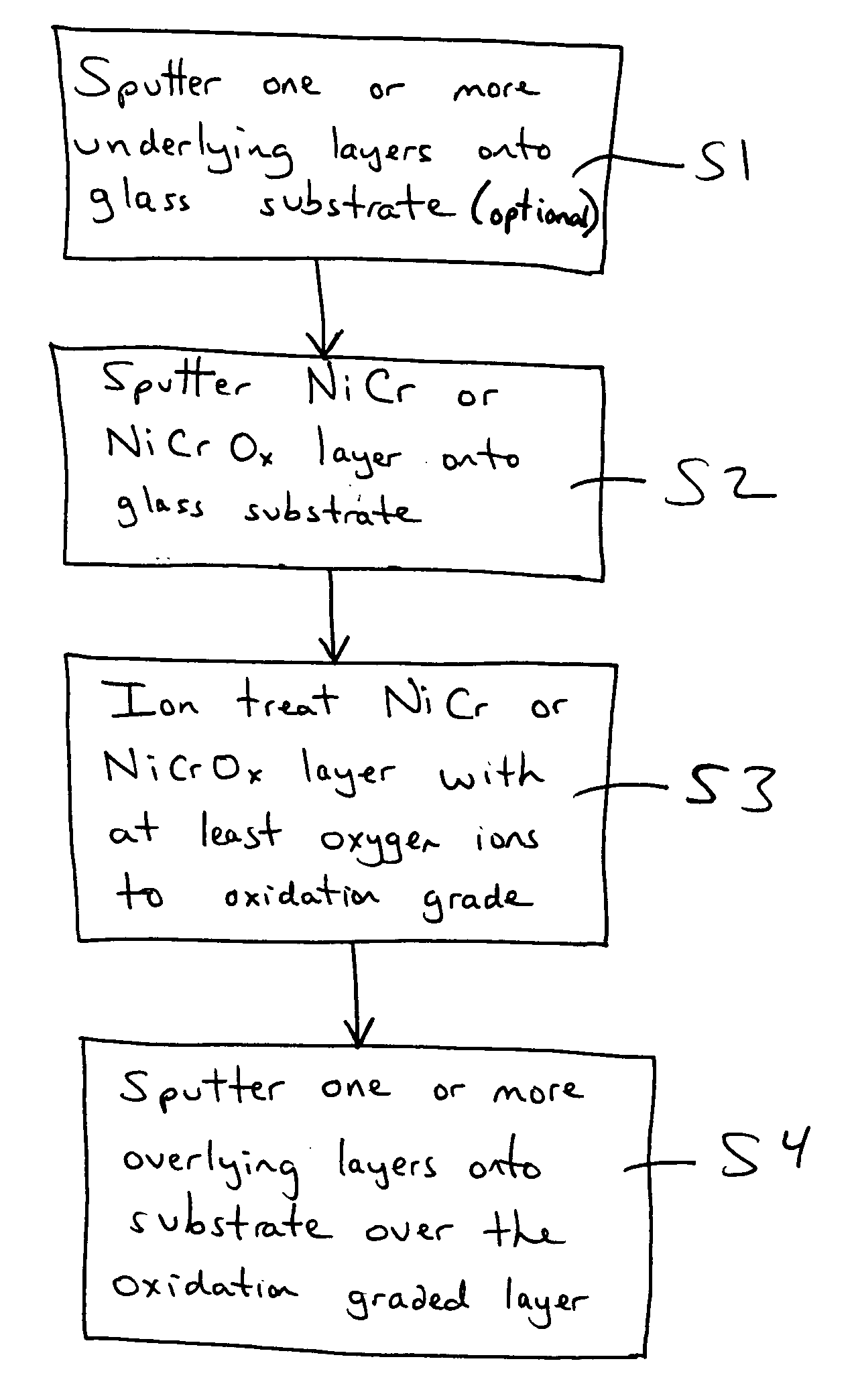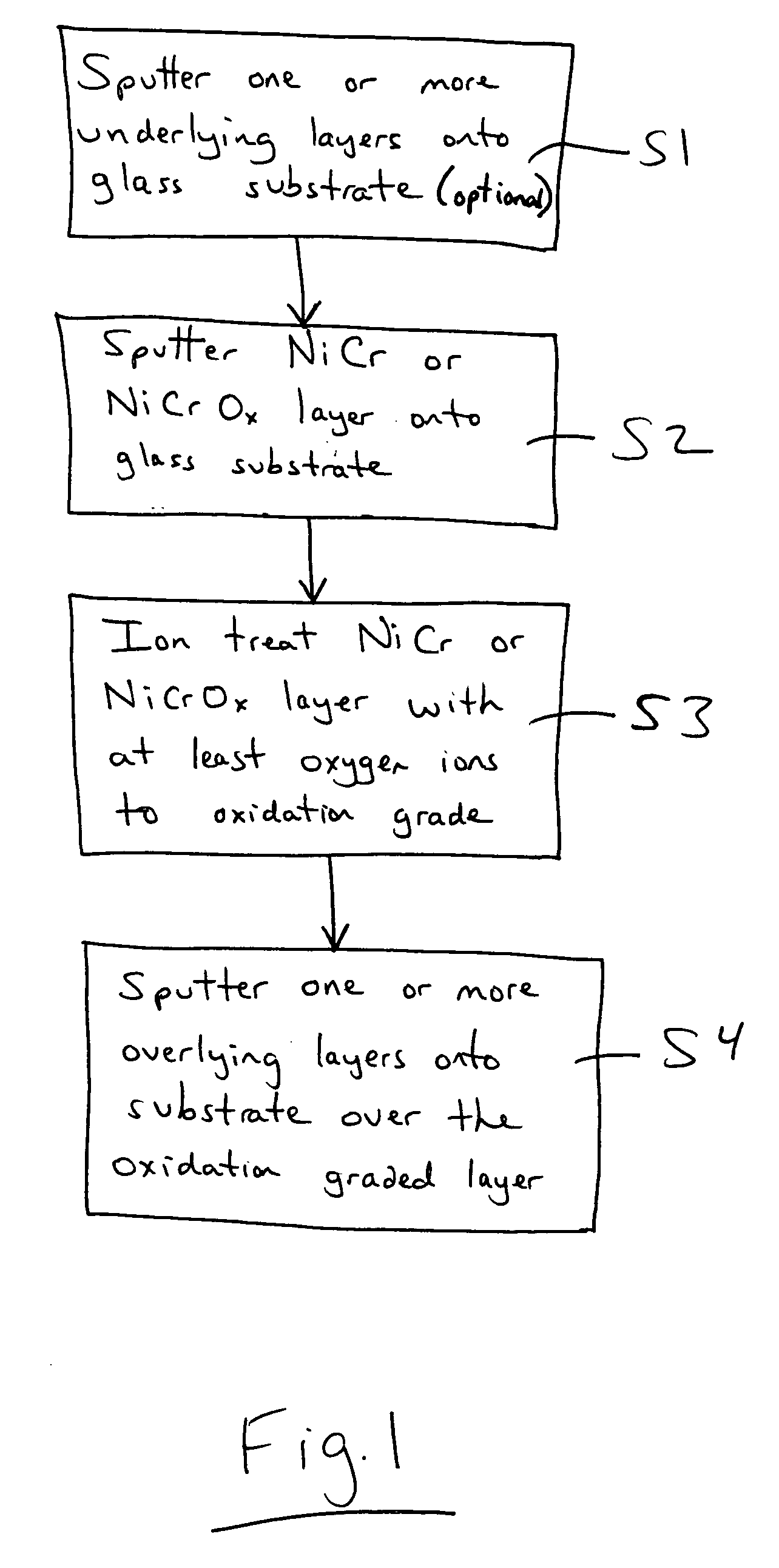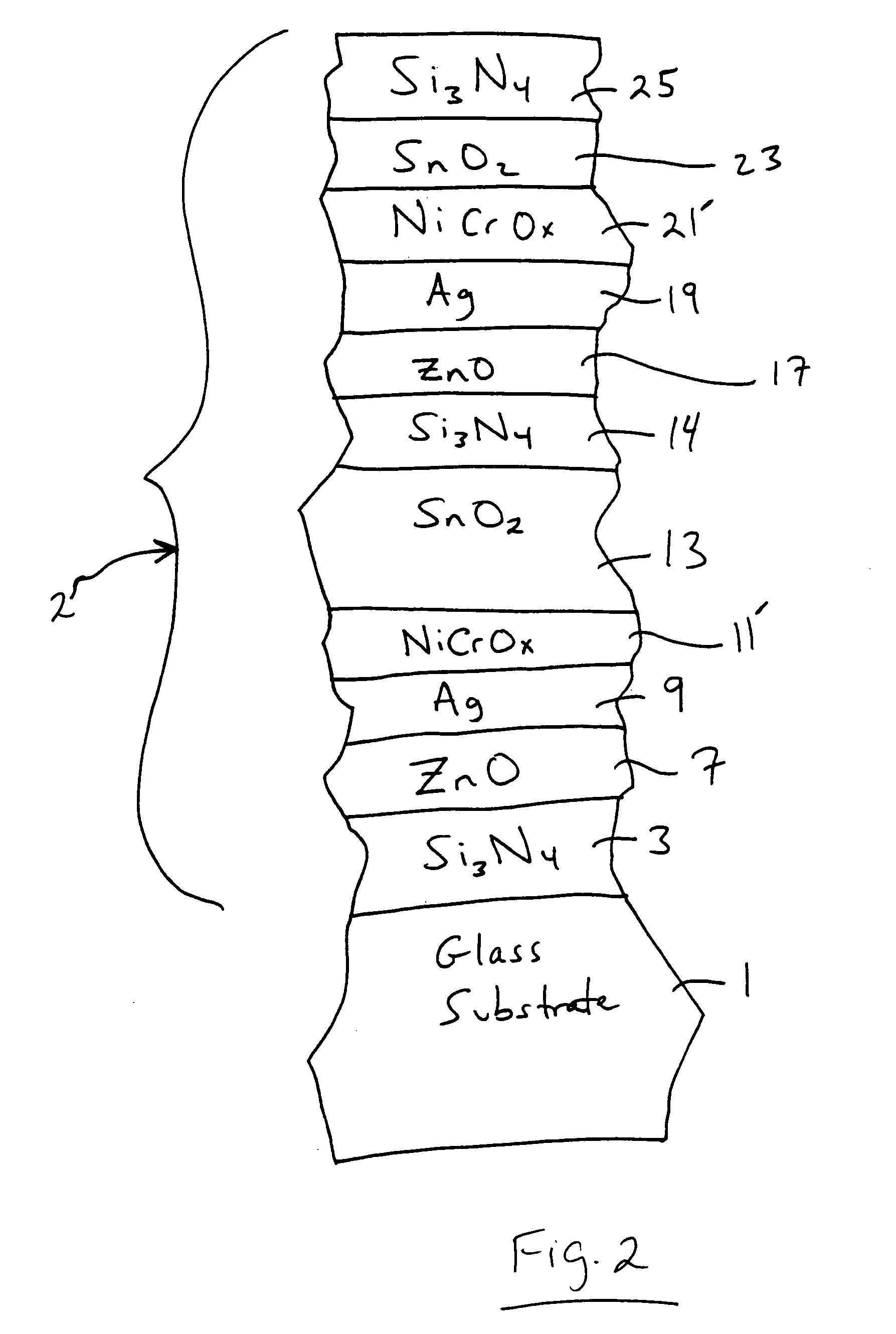Coated article with oxidation graded layer proximate IR reflecting layer(s) and corresponding method
a technology of ir reflecting layer and oxidation grade, which is applied in the direction of vacuum evaporation coating, coating, plasma technique, etc., can solve the problem of unfavorable target flaking and achieve the effect of improving (higher) visible transmission
- Summary
- Abstract
- Description
- Claims
- Application Information
AI Technical Summary
Benefits of technology
Problems solved by technology
Method used
Image
Examples
example 1
[0061] The following hypothetical Example 1 uses a 2.1 mm thick clear glass substrates so as to have approximately the layer stack set forth below and shown in FIG. 2. The thicknesses are approximations, and are in units of angstroms (Å).
Layer Stack for Example 1
[0062]
LayerGlass SubstrateThicknessSixNy177ZnAlOx109Ag96NiCrOx25SnO2535SixNy126ZnAlOx115Ag95NiCrOx25SnO2127Si3N4237
[0063] Both NiCrOx layers will be ion beam treated to create respective oxidation graded layers 11′ and 21′. The processes used in forming the coated article of the Example are set forth below. The sputtering gas flows (argon (Ar), oxygen (O), and nitrogen (N)) in the below table are in units of sccm (gas correction factor of about 1.39 may be applicable for argon gas flows herein), and include both tuning gas and gas introduced through the main. The line speed was about 5 m / min. The pressures are in units of mbar×10−3. The silicon (Si) targets, and thus the silicon nitride layers, were doped with about 10% alu...
example 2
[0071] In Example 2, six different NiCr inclusive layers were formed and tested as shown in FIG. 9. The first five layers were sputtered directly onto a glass substrate (with no layers therebetween) using a NiCr target in a sputtering atmosphere or argon gas (250 sccm) and oxygen gas in the amounts / power shown in FIG. 9 (oxygen gas flows used during sputtering in FIG. 9 are in units of sccm, and sputter power is in units of kW). Then, a metallic NiCr layer was sputtered directly onto a glass substrate (with no oxygen gas in the sputtering zone), and thereafter ion beam treated with oxygen gas using an ion source anode / cathode voltage of 3,000 V. FIG. 9 illustrates that significantly more Ni was caused to be oxided at a top region of the NiCr inclusive layer using the ion beam treatment compared to merely sputtering in an oxygen inclusive atmosphere. This is highly advantageous as explained above.
PUM
| Property | Measurement | Unit |
|---|---|---|
| sheet resistance | aaaaa | aaaaa |
| sheet resistance | aaaaa | aaaaa |
| sheet resistance | aaaaa | aaaaa |
Abstract
Description
Claims
Application Information
 Login to View More
Login to View More - R&D
- Intellectual Property
- Life Sciences
- Materials
- Tech Scout
- Unparalleled Data Quality
- Higher Quality Content
- 60% Fewer Hallucinations
Browse by: Latest US Patents, China's latest patents, Technical Efficacy Thesaurus, Application Domain, Technology Topic, Popular Technical Reports.
© 2025 PatSnap. All rights reserved.Legal|Privacy policy|Modern Slavery Act Transparency Statement|Sitemap|About US| Contact US: help@patsnap.com



